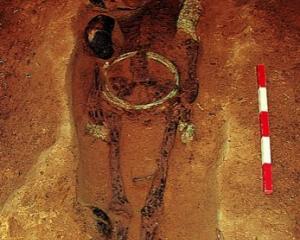Even in the rational world of biological science, the publication in Science of the findings of an American-based team of researchers caused considerable excitement.
A bacterial cell had been controlled by a chemically synthesised genome.
That meant that the cell began replicating and making a new set of proteins entirely controlled by man.
In the secular world, this was briefly sensational, and described somewhat effusively as the creation of the world's first "artificial cell".
Much foolish speculation along the lines of "Dr God" creating a synthetic man followed.
There is no doubt that the team employed at the J. Craig Venter Institute has achieved an important technical step towards the goal of creating artificial or synthetic life.
But we are a very long way indeed from realising some of the speculation: the construction of human limbs or body parts or even a human being in the laboratory.
That remains in the realm of fiction.
The stated goal of Dr Venter's team is to find a way to mass produce compounds useful for purposes such as manufacturing fuel or limiting CO2 production.
Dr Venter, who heads his own private corporation, and his team successfully combined two separate actions for the first time.
They created a bacterial chromosome; then they transferred it to a living bacterium where it replaced the DNA and began reproducing itself and making a new proteins.
That achievement has been correctly described as a "defining" moment in biological science, certainly on a par with other significant technical advances in genetic engineering.
It took more than a decade of effort by about 20 scientists, and as much as $US40 million of venture capital, much of it from multi-national corporations.
One of the most important steps the team had to take was to invent the ability to create and manipulate chromosomes, which success it first reported in Science magazine as recently as 2007.
Only in February this year was the team able to show it could make an artificial chromosome containing information that could differentiate between a natural genome and an artificial one.
The team has not yet, in fact, created a fully artificial cell.
Their experiment involved an existing natural cell, but a route is beginning to be drawn - at least in molecular biology.
The unknown is the ethical route.
Dr Venter's is not a public institute (he describes it as a "not for profit" research facility).
He has been a controversial figure in genetic engineering science and has faced accusations of wanting to make money out of research that should be in the public domain.
His principal renown concerns the Human Genome Project, where, frustrated by the slow progress of publicly funded research, he and his colleagues used private funding while sequencing the entire human genome, planning to subsequently create a subscription-only database.
However, after a great deal of criticism, in 2000 he joined with Francis Collins, who headed the National Institutes of Health and United States Public Genome Project, to jointly announce the mapping of the human genome in 2000, and the sequence was made available.
The ethical issues arise out of the potential use - and misuse - of manipulated or artificial genes.
Given the accelerating speed of genomics research, regulatory agencies and governments will have to move swiftly to ensure suitable and effective controls are in effect.
The ability to manufacture synthetic viruses was first reported in 2002; now science is a considerable step closer to manufacturing living synthetic cells able to be commanded.
A further complication is that Dr Venter's company is seeking patent rights, threatening the possibility of a commercial monopoly on "artificial life".
In fact, several research teams around the globe are attempting to create fully synthetic cells; at least one is working on the creation of synthetic genomes that will carry instructions to bacteria to manufacture influenza vaccine.
All of this activity is, so far as is known, taking place in strictly controlled conditions in the laboratory.
Preventing the release of manipulated cells, accidentally or deliberately, into the environment is a very real concern because the consequences are unknown, should they survive, and the risks may be classified as vastly significant.
One important point is that the risks can be limited because safeguards can be built into such cells, as indeed did Dr Venter's team in placing an identifying "mark" in their creation.
His team has achieved a commendable and impressive advance in cellular biology, from which much new science will flow of benefit to mankind - providing the dangers are recognised and regulated.










